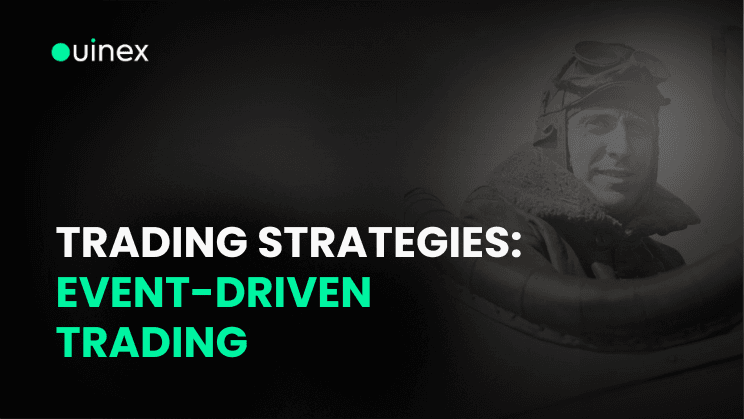
Event-Driven Trading: Capitalize on the Big Moments
Event-driven trading is all about taking advantage of market-moving events—whether it’s a corporate merger, earnings report, or a political change. If you can spot the opportunities created by these events and act fast, you can profit from the sharp price moves that follow.
What Is Event-Driven Trading?
Event-driven trading is a strategy that involves taking positions based on specific events or catalysts that can significantly impact the price of an asset. These events might be earnings reports, mergers and acquisitions, dividends, changes in management, or even geopolitical developments. The goal is to profit from the market’s reaction to the event, either by entering before it happens or capitalizing on the price movement afterward.
How It Works
- Identify Key Events: Event-driven traders watch for upcoming events that could move the market. These could include scheduled earnings reports, economic data releases, corporate announcements (like mergers or acquisitions), or even political events (such as elections or policy changes).
- Predict Market Reaction: The key to event-driven trading is understanding how the market might react to a specific event. Traders analyze past market reactions to similar events, study the potential impact, and decide whether the asset is likely to rise or fall based on the outcome.
- Enter the Position: Traders can take positions before the event (anticipating the outcome) or after the event (reacting to the market’s response). For example, you might buy a stock in anticipation of strong earnings or short a currency after a central bank announcement.
- Monitor the Event: Once the event happens, traders carefully monitor how the market reacts. If the price moves in the expected direction, the trader locks in profits. If the reaction is contrary to expectations, traders may exit quickly to minimize losses.
- Risk Management: Events can cause significant price movements in a short time, so risk management is crucial. Traders use stop-loss orders to protect against large losses if the market reacts unexpectedly.
Real-World Examples
- Mergers and Acquisitions (M&A): A company announces it will acquire another. The stock price of the target company rises, while the acquirer’s stock might dip. An event-driven trader buys shares in the target company to profit from the merger price increase.
- Earnings Reports: A company is about to release its earnings. Event-driven traders anticipate the results—if the earnings beat expectations, the stock price might jump; if the results disappoint, the price could drop. Traders can take positions based on their earnings prediction.
- Geopolitical Events: A major political event, like an election or a trade agreement, could have far-reaching implications on currency pairs or commodities. Traders can position themselves ahead of such events or react quickly once the results are known.
What You Need to Know
- Know the Calendar: Just like news-based trading, event-driven trading relies on staying up-to-date with scheduled events. Having access to an economic calendar or earnings schedules is key to anticipating market movements.
- Analyze Past Reactions: While no two events are exactly the same, looking at how markets have reacted to similar events in the past can provide valuable insights into possible price movements.
- Market Reaction May Differ: The market doesn’t always react as expected. Sometimes, news can be priced in ahead of time, or the actual outcome might be less impactful than anticipated. Be ready for surprises, and adjust your strategy accordingly.
- Risk of Overreaction: Events often cause sharp price movements, but they can also lead to overreactions. Be cautious of getting caught in a “knee-jerk” move and ensure you have solid risk management in place.
- Diversification: Since event-driven trading often focuses on specific companies or sectors, diversifying your portfolio is essential to manage risk. Don’t bet the farm on a single event or asset.
Why Event-Driven Trading?
If you like the thrill of high-impact moments and want to capitalize on significant market movements, event-driven trading could be your go-to strategy. Whether you’re anticipating earnings surprises, corporate actions, or geopolitical shifts, this strategy lets you profit from key events that shake up the market.
Event-Driven Trading FAQs
What kind of events can move the market?
Events like earnings reports, mergers and acquisitions, central bank decisions, political elections, product launches, and even natural disasters can trigger significant price movements.
How do I anticipate how the market will react to an event?
Look at historical data and how markets have reacted to similar events in the past. Analyzing market sentiment and expert opinions can also give clues about potential market reactions.
Can I trade event-driven situations in any market?
Yes, you can trade event-driven opportunities in stocks, commodities, currencies, and cryptocurrencies. Each market will have its own set of catalysts that create opportunities.
How risky is event-driven trading?
It’s risky, especially since the market’s reaction to an event isn’t always predictable. But with solid risk management—like using stop-loss orders and controlling position size—you can minimize potential losses.
Is it possible to automate event-driven trading?
Yes! Many traders use algorithms or automated trading systems to enter and exit positions based on specific events or triggers, reducing the need for constant monitoring.